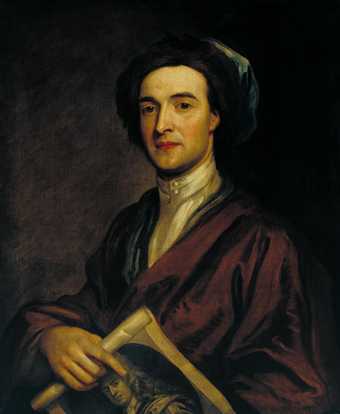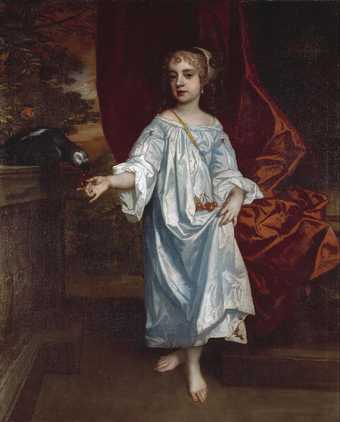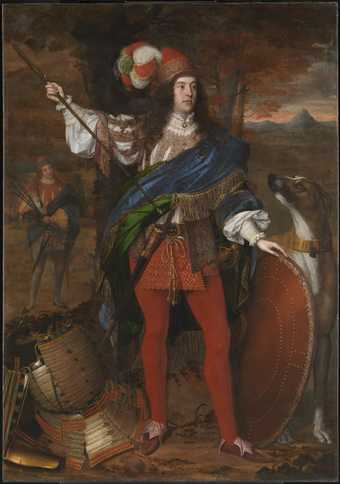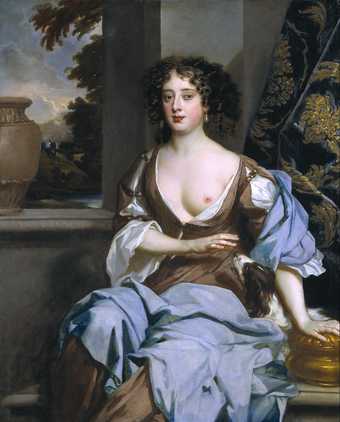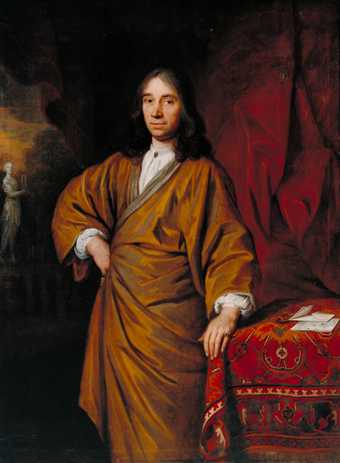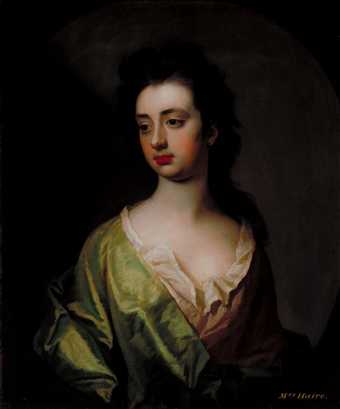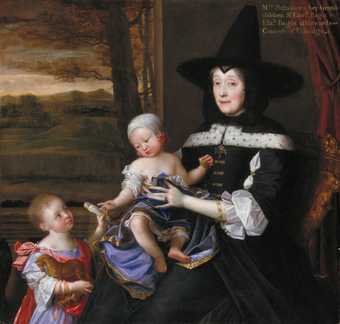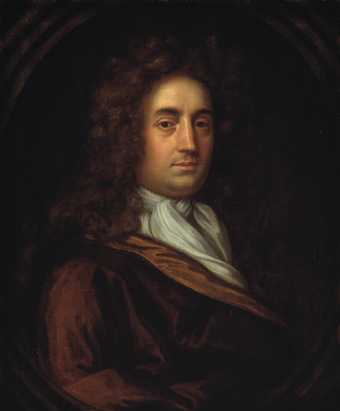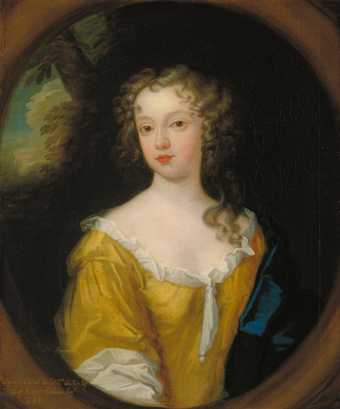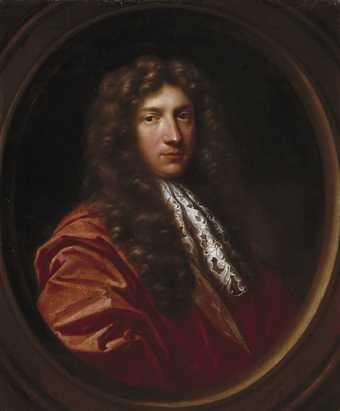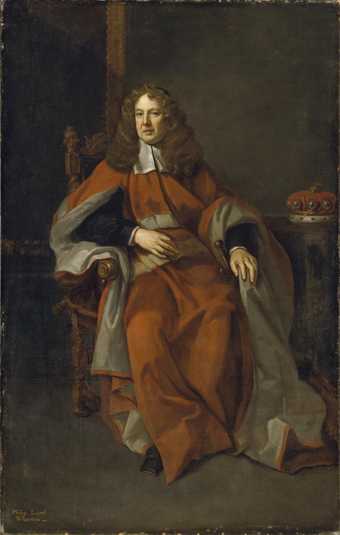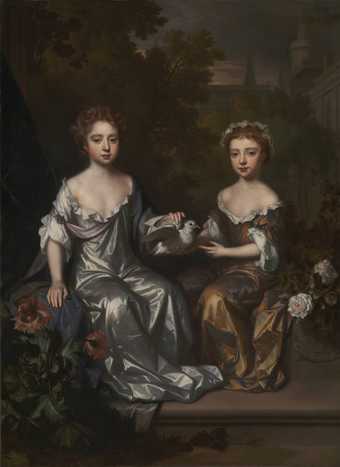Sorry, no image available
- Artist
- Mary Beale 1633–1699
- Medium
- Oil paint on canvas
- Dimensions
- Support: 535 × 460 mm
frame: 710 × 640 × 77 mm - Collection
- Tate
- Acquisition
- Purchased 1992
- Reference
- T06612
Summary
In 1681, a year in which a great deal is known about Mary Beale due to the survival of her husband's notebook (Heinz Archive, National Portrait Gallery), it is recorded that she undertook several paintings for the purpose of 'study & improvement'. This portrait study is very possibly an example of such a work.
In the notebook, really an annotated almanac, Charles Beale (1631-1705) lists his wife's activities for each day, detailing her commissioned portraits as well as the experimental studies. For the latter, he identifies the sitters and, in most cases, their poses and tracks the progress of each work from one sitting to the next, paying particular attention if a novel technique had been used. It becomes clear that Mary Beale's purpose in carrying out the studies, as well as to develop her skill, was to test out, in conjunction with her husband, various painting methods. Charles Beale's interest in the technical aspect of painting is known to date back to at least 1647, when he began a journal entitled Experimental Secrets found out in the way of Painting (Glasgow University Library). This, as well as his notebooks of 1677 (Bodleian Library, Oxford) and 1681, are full of notes relating to his trials in manufacturing expensive pigments, his experiments in priming canvases and his efforts to perfect procedures such as the quick-drying of paint layers. It was this aspect of the painting studio that Charles oversaw, a business which was a collaborative partnership between husband and wife. Together they sought to improve the studio's efficiency, through perfecting procedures that would produce good results at a lower cost.
The portraits executed for study were painted on a variety of supports - fine canvas, sacking, onion bag and bed ticking. Mary's models, apart from herself and her husband, were her son Charles, Kate Trioche (a studio assistant), Alice Woodforde (her godchild) and Katy Sandys, who were painted in a variety of informal poses. It is not possible to match this study with a particular reference in the 1681 notebook, although it is close to the description of Kate Trioche's portrait painted on 17 May, 'side face fint. up at once upon a hungry, fine Canvis, of the least Size but one with a hand in it', and also to a similar one of Alice Woodforde done on 27 May. The canvas used here is not 'fine' but it does seem to have been 'painted up at once', in other words in one session rather than the average four. This quick process was one that Mary and Charles were attempting to master. It could result in colours appearing muddy and opaque, as has happened to some extent in this work. Nevertheless, its immediacy and informality makes it, arguably, one of Mary Beale's most appealing works.
Further reading:
Tabitha Barber with Mary Bustin, Mary Beale: Portrait of a Seventeenth-Century Painter, her Family and her Studio, exhibition catalogue, Geffrye Museum 1999, p.53 and cat. 34, p.78, illustrated, p.52, in colour.
Tabitha Barber
May 2001
Does this text contain inaccurate information or language that you feel we should improve or change? We would like to hear from you.
Display caption
Mary Beale was the most prolific professional female portraitist working in England in the 17th century. This engagingly informal oil sketch was probably an experiment in attempting to finish a work in one session, rather than the more costly and time-consuming four or five. Mary Beale used members of her family and studio as models for such works. In 1681, for example, her female studio assistant and her godchild were painted ‘in side face’, as here.
Gallery label, February 2016
Does this text contain inaccurate information or language that you feel we should improve or change? We would like to hear from you.
Catalogue entry
Mary Beale 1633–1699
Portrait of a Young Girl
c.1679–81
Oil paint on canvas
535 x 460 mm
Purchased (Grant-in-Aid) 1992
T06612
Ownership history
Unknown; apparently acquired by a member of the Feilding family from a West Country antique shop in the 1970s; by descent to Mrs Basil Feilding of Beckley Park, Oxford, from whose estate sold at Christie’s, London, 13 December 1991 (no.125), as follower of Sir Peter Lely; purchased by Historical Portraits Ltd., from whom bought by Tate.
Exhibition history
Mary Beale: Portrait of a Seventeenth-Century Painter, her Family and her Studio, Geffrye Museum, London 1999.
A great deal is known about Mary Beale’s activities in 1681 due to the survival of her husband’s notebook.1 According to this record, in that year she undertook several paintings for the purpose of ‘study & improvement’, of which this portrait study is very possibly an example. In the notebook, really an annotated almanac, Charles Beale lists such works among the entries detailing Mary’s day by day activities, but also makes two separate lists of them, on blank pages towards the back. Both lists contain quite detailed notes on each painting, including the sitter, the pose and the type of support used.
It is clear that these works, mainly portraits, were quite distinct from her commercial commissions, which were listed in the ‘profitable Account’, as well as those ‘done for friends, & upon account of kindness and not profitt’, although a couple of portraits cross over with this latter category (portraits of family friends executed on sacking). Mary’s intention in painting them was to experiment, in conjunction with Charles, with different painting techniques, their aim to improve the speed and efficiency of the studio’s portrait production, as well as to economise. 1681 was to some extent a year of financial hardship for the Beales. Mary earned £209.17.06, below her average annual income, and in April of that year Charles was forced to borrow £10 from Auditor Bridges, his nephew, having ‘only 2s 6d left us in the house against Easter’.2 The Beales were frequently in debt, however, before as well as during 1681, and it is unlikely that financial economy was the sole stimulus for this period of experimentation. Charles Beale had had a keen interest in the technical aspects of painting from at least the age of sixteen, as is clear from his surviving notebook Experimental Secrets (Glasgow University Library).3 Both his surviving notebooks of 1677 (Bodleian Library) and 1681 are full of notes on his priming experiments and his efforts to discover methods for the quick-drying of paint layers. He also displays great interest in the progress of Mary’s portraits, tracking their progress from one sitting to the next, noting the outcome if novel techniques had been employed. The experiments recorded in 1681 no doubt reflect Charles’s thirst for the discovery of new methods, combined with the practical desire to devise procedures that produced the best results at the lowest cost.
The portraits executed for study were painted on a variety of supports – fine canvas, sacking, onion bag and bed ticking, allowing Charles to experiment in his primings with different textures and fibres, from expensive fine weaves to much cheaper, coarse cloth. The wide range of surfaces thus produced allowed Mary to work from a broad style, on a large, open weave, to a fine, almost miniaturist technique on a very smooth surface.4 The portraits were also painted in various sizes, from three-quarter length to ‘least size of all’, the same categories used for Mary’s commissioned works. Her main models, apart from herself and her husband, were her son Charles, Kate Trioche, Alice Woodforde and Katy Sandys. Kate Trioche was a studio assistant or apprentice who as well as sitting for Mary is recorded collecting payments from clients and buying from Charles a quantity of ultramarine. Alice Woodforde (b.1662) was Mary’s godchild, the daughter of the Beales’ great friend, the poet Samuel Woodforde, and Alice Beale, Charles’s cousin who had tragically died in childbirth in 1664. Alice frequently stayed with the Beales in their house in Pall Mall, including a period in 1681. Katy Sandys was a small, blonde curly-haired girl whom Charles Beale junior (Mary’s son) also drew. References to Mary painting them, in a variety of informal poses, are numerous. She painted Kate Trioche’s ‘side face’ on sacking, on ‘Onion bag, web’d like Sacking’ as well as on a coarse canvas ‘least size but one’. She was painted ‘3qtr face looking off’ as well as ‘lookinge downe’ on onion bag. Alice was painted singing, and on 14 July ‘looking up’, on ‘Onion bag of the least size. Admirably colord & painted, being very sprightly’.
Although it is not possible to match this picture with a specific reference, two works described in 1681 seem close to it in conception: on 17 May Kate Trioche was painted ‘side face fint. Up at once upon a hungry, fine Canvis, of the least Size but one with a hand in it’, and on 27 May Alice’s ‘Side face’ was ‘painted up excellently at once upon a fine hungry canvis of ye same Size. A hand is to be in it’.5 The canvas used here does not seem to be ‘fine’ (established by Mary Bustin through a weave count and comparison with other fine weave canvases), although the hand certainly appears to have been added after the main figure was finished. The sketch also seems to have been an attempt to ‘paint up at once’, in other words in one session rather than the average four. It was a technique, also referred to in the notebooks as painting up ‘at first’, that Mary and Charles were attempting to master. The trials were not always successful. For instance, a portrait of ‘Son Charles’, formerly painted up ‘at 1st’ was later ‘painted over a 2d time & made much better’, while on 8 August 1681 it had to be painted over a third time which ‘very much improved’ it. This quick process, compared with the usual technique of building the painted surface up layer upon layer, waiting for one to dry before the next was added, could result in colours sinking and appearing muddy and lifeless, as has happened to some extent in this work.6 Nevertheless, its immediacy and informality, conditions under which Mary invariably responds well, makes it, arguably, one of her most appealing works.
Mary’s son Charles drew a copy of the work, without the hand, one of a body of red chalk drawings, probably dismembered leaves from a sketchbook similar to the three of his that survive intact, dated 1679 (Pierpont Morgan Library, New York), 1680 (British Museum, London), and an undated one containing secondary versions of many of the works in the 1680 volume (British Museum, London). All the drawings are very similar in style and are presumably close in date, and in many instances named sitters can be linked to characters familiar from Charles Beale’s 1681 notebook – which strongly suggests that this portrait sketch could well be associated with Mary’s 1681 recorded period of experimentation. A work similar in nature is Mary’s Young Girl in Profile (St Edmundsbury Borough Council), the young sitter in an informal pose with arms crossed at the waist, looking in profile to the left.7
Tabitha Barber
July 2006
Notes
Explore
- people(22,072)
-
- actions: postures and motions(9,111)
-
- sitting(3,347)
- children(2,479)
-
- girl(1,079)
- portraits(4,491)
-
- individuals: female(1,698)
- arts and entertainment(7,210)
You might like
-
Sir Godfrey Kneller John Smith the Engraver
1696 -
Sir Peter Lely Girl with a Parrot
c.1670 -
John Riley James Sotheby
c.1690 -
Sir Peter Lely Elizabeth, Countess of Kildare
c.1679 -
John Michael Wright Sir Neil O’Neill
1680 -
Gilbert Soest Henry Howard, 6th Duke of Norfolk
c.1670–5 -
Sir Peter Lely Portrait of an Unknown Woman
c.1670–5 -
Sir Godfrey Kneller Portrait of John Banckes
1676 -
Michael Dahl Portrait of Mrs Haire
1701 -
John Michael Wright Portrait of Mrs Salesbury with her Grandchildren Edward and Elizabeth Bagot
1675–6 -
Unknown artist, Britain, attributed to Mary Beale Portrait of Robert Colman
c.1690 -
Haerman Verelst Portrait of a lady, thought to be Dionesse Cullum, wife of Robert Colman
c.1685 -
Simon Du Bois Portrait of a Gentleman, probably Arthur Parsons MD
1683 -
Sir Godfrey Kneller Philip, 4th Lord Wharton
1685 -
Willem Wissing Portrait of Henrietta and Mary Hyde
c.1683–5


